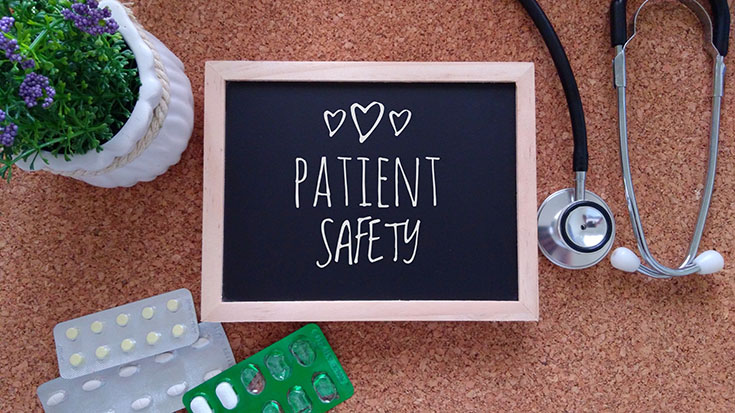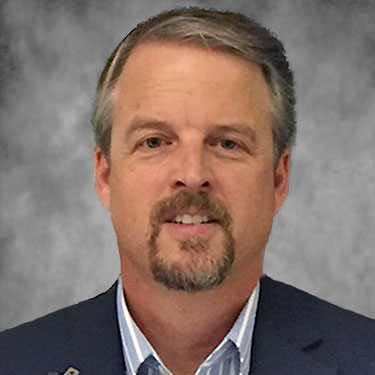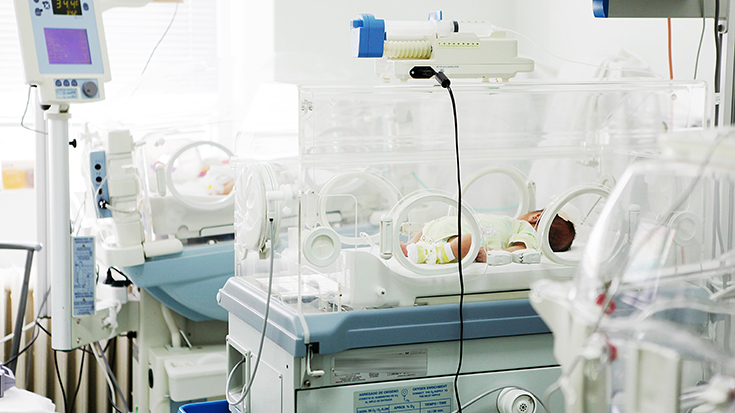
Each year, patient safety experts from around the world meet at the Patient Safety Movement Foundation (PSMF) Annual Patient Safety, Science & Technology Summit to discuss significant health care-related harm events. The goals of the Summit are to hear from actual patients or their family members that have been negatively impacted by life-changing adverse events. Unlike most health care conferences, the PSMF Summit’s unique approach attempts to share topics from a patient perspective followed by bringing together the patient/family members with a prominent panel of experts to outline ways to reduce the risks surrounding the complexities of care.
The American Association for Respiratory Care (AARC) has been actively engaged with the PSMF since its inception in 2013. Over the years many of the topics discussed by the expert panelists were directly or indirectly related to the field of respiratory care. Examples include reducing the risks of respiratory depression in patients receiving opioids or preventing unplanned extubations.
As the AARC’s liaison to the PSMF, I have the honor of attending the summit events and representing the organization and our members. Some may ask, why do we need an AARC liaison for the PSMF? The AARC Board of Directors believes that we must ensure that respiratory therapists are included in patient safety activities at the highest levels locally, nationally and globally. Whether in our hospitals or international foundations such as the PSMF, RTs must be directly involved. If RTs are not included in the discussions that shape health care policies, procedures, and products, then they are not including our professional knowledge or our voices in the decision-making. As RTs we must step up to the plate in regards to patient safety. The respiratory care field has many brilliant minds and it is imperative that we become active participants in patient safety initiatives and not sit by the sidelines.
Since 2013, I have had the immense pleasure of working alongside many patients and family members affected by medical errors, along with some of the most well-known patient safety experts as we collaborate to improve health care safety and reduce harm.
Keynote speakers bring expertise and experience
The PSMF Summit included the following keynote speakers:
- Dr. Randall Clark, MD President, American Society of Anesthesiologists
- Dr. Edoardo De Robertis, MD, PhD, President, European Society of Anesthesiologists
- Dr. Neelam Dhingra, MD Unit Head of the World Health Organization (WHO) – Patient Safety Flagship
- Dr. Carsten Engel, MD CEO, International Society for Quality in Health Care
- Joe Kiani, Founder of the PSMF & Chairman/CEO of Masimo
- Dr. Peter Pronovost, MD, PhD, Chief Clinical Transformation Officer, University Hospitals, Northeast Ohio
- Dr. Thomas Zeltner, MD Chairman of the WHO Foundation, Geneva Switzerland
- Former President Bill Clinton
Summit presentations
While the topics presented at this year’s PSMF summit were not directly related to respiratory care, several topics contained information that could benefit those in the respiratory therapy profession and our patients.
Session 1: Overcoming Obstacles for Applying High Reliability Principles in Healthcare
Dr. David Mayer, Executive Director of MedStar Institute and PSMF Board Member led the presentation and two physicians and a chief investigator in health care safety joined Dr. Mayer in the discussion. Like all presentations provided at the PSMF Summit, the panel discussion began with a video that highlighted a patient experience related to health care harm. The video for this presentation describes the horrific experiences Alicia Cole has experienced not only once, but twice at two different hospitals. The first event occurred post-operatively where Cole ended up with multiple serious hospital-acquired infections that required her to go through six additional surgeries, nine blood transfusions, and endure three years with an open abdomen. Recently, after spending years as a patient safety consultant and advocate, she was impacted a second time by another medical error when an infectious disease physician failed to listen to her concerns and properly diagnose her with sepsis. This second medical error led to two additional surgeries, two blood transfusions, and Cole fighting for her life.
Key Take Away: Following the video, Dr. Mayer and a panel of patient safety experts discussed how health care organizations need to better design processes around high reliability, including how we teach health care providers to listen to their patients and their family members. Organizations that engrain high reliability principles into their processes along with a strong healthy culture of safety have been shown to have improved patient outcomes and reduce risks of harm. Some of the key characteristics of high reliability organizations include: Preoccupation with failure, reluctance to simplify, sensitivity to operations, deference to expertise and a commitment to resilience. To learn more about High Reliability in Healthcare: High Reliability | PSNet (ahrq.gov)
Session 2: Embracing the Science of Human Factors to Unleash Safety Innovation in Healthcare
This session kicked off with a video of English actor Jamie Thomas King and his wife Tamara Podemski. They describe how Podemski was expecting their second child, yet when she went in for a high-risk cesarean section (C-Section) the medical team delayed the procedure and rescheduled it for the following day. When Podemski woke up in the morning, she found her abdomen to be hard. Following an emergency C-section, they found out their little baby boy named Benjamin was severely deprived of oxygen. After five days of testing, it was determined that Benjamin had suffered severe brain damage. He was then removed from life support only to live for approximately nine hours in his mother’s arms. The outcome of this horrific event is that the United Kingdom now has strict guidelines surrounding the prioritization of urgent and emergency deliveries.
Key Take Away: The expert panel then discussed how the role of human factors engineering combined with an improved system or process design, can significantly impact patient safety improvements. The panel included human factor experts from health care and aviation. They discussed the problems around complex medical care and where the application of principles and methodologies of human factors engineering have helped to improve patient care and prevent harm. Some of the key characteristics of human factors engineering include: Usability testing, forced functions, standardization, and resiliency efforts. To learn more about Human Factors Engineering in Healthcare: Human Factors Engineering | PSNet (ahrq.gov)
Session 3: Patient Advocacy: The Compass for Innovation
The third session of the Summit started with a video with Michael Seres, who is a survivor of advanced life-long Crohn’s disease that has destroyed all but about 40 cm of his bowels. Seres was facing a life-changing event with a colostomy bag and all the endless health care issues that are related to his illness. Seres started an online blog called 11 Health, which aims to bring together health care providers, manufacturers, and patients to better design ostomy products and technology. Seres helped to create an innovative 24/7 electronic monitoring device that alerts the user of their colostomy bag status. Seres’ main goal from his experience is to get the word out to health care product designers and practitioners about the importance of including the end-users (patients) in all aspects of their product creation.
Key Take Away: The panel then discussed ways to increase outreach to manufacturers and researchers to ensure they get feedback from patients whenever designing new products. This topic is important to RTs since our medical devices may be directly attached to patients’ faces or airways and may cause medical device-related pressure injuries (MDRPIs). Including patients in the design and testing of products is essential to creating safer medical devices.
Session 4: How Can Regulation Support Quality and Value in Healthcare
The session started with a video with Gwen Cox, who is an RN that accidentally caused a serious life-threatening medication error when she was joking with co-workers and not focusing her attention when drawing up medications in a syringe. Her lack of attention led to administering a dosage of blood pressure medication twice the prescribed amount. The error caused her patient to have a heart attack and four hours of resuscitation efforts to save her life. The event left the patient with a weakened heart and shortened life span. Cox was devastated by the error she caused. After attending grief counseling, she decided to dedicate her life’s work as a nurse to being a patient safety advocate.
Key Take Away: The panel of patient safety experts then discussed at length the recent legal battle and conviction of the nurse at Vanderbilt Medical Center. They described the negative impacts that the legal decision has had on patient safety and adverse event reporting. Finally, the panel discussed how regulatory and court actions could better support patient safety, quality care, and value in health care.
Session 5: Healthcare Safety During the Pandemic
The fifth presentation session video was about an avoidable death of a patient. Jennifer Niabarger sustained multiple life-threatening injuries followed by multiple hospital-acquired conditions. Niabarger was improving and starting to do well until a transition of care communication error between health care providers led to her unintentional death. In the video, Brent Niabarger (Jennifer’s husband) explains in detail the events around health care systems failures that brought on his wife’s unfortunate passing.
Key Take Away: Following the video, Dr. Michael Ramsay, CEO of the PSMF led the panel. The panel included physicians and patient safety experts from around the globe as they discussed the deleterious effects that COVID-19 has had on patient safety efforts. The goal of the panel discussion was to discuss how patient safety measures could be better hardwired so that situations such as epidemics, pandemics, or other serious events would not derail patient safety improvement efforts. It is essential for RT departments to design highly reliable and sustainable processes, so that situations such as the COVID pandemic do not side rail patient safety initiatives.
Concluding thoughts
Due to COVID-19, this year’s PSMF Summit was held virtually. The event included world-renowned patient safety and health care leaders from around the globe discussing actions being taken to improve quality and safety. One of the most impactful aspects of the PSMF Summit is its use of telling stories from a patient impact point of view. The stories outline preventable harm or deaths often caused by human error or poorly designed health care processes. The Summit allows experts from all aspects of health care, science, and technology to get together and discuss challenges along with actual or potential solutions. The AARC’s involvement with the PSMF ensures that RTs are at the table when respiratory-related patient safety topics are discussed to ensure our valuable input is heard.
How you can help
The AARC highly recommends that members view the PSMF website. The site includes Actionable Patient Safety Solutions (APSS) that can help guide hospitals in their efforts to provide safer care.
- Website link: Patient Safety Movement Foundation • Global Non-profit focused on ZERO
- Website link to the PSMF APSS documents
- The 2022 Summit presentations are available to stream online at: 2022 World Patient Safety, Science & Technology Summit • Patient Safety Movement
Email newsroom@aarc.org with questions or comments, we’d love to hear from you.














